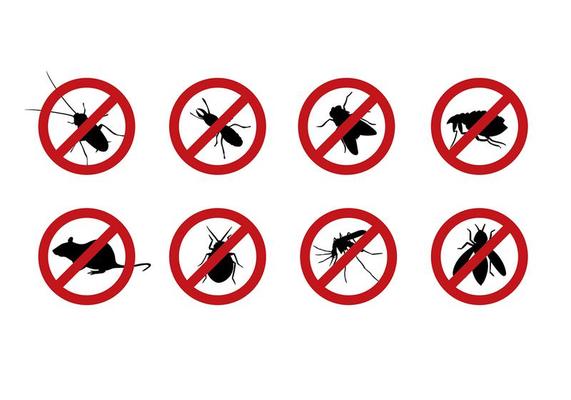A1 Charlotte Pest Control Companies - Your Neighborhood Pest Professionals
A1 Charlotte Pest Control Companies - Your Neighborhood Pest Professionals
Blog Article
Bed Bug Treatment Failure: Comparing Chemical Vs. Non-Chemical Solutions
In the realm of parasite control, specifically when handling the consistent concern of bed insects, the choice between chemical and non-chemical treatment services can be a crucial one. Both approaches supply distinctive advantages and disadvantages, influencing factors such as performance, safety and security considerations, and total expense. By analyzing the nuanced information of each technique, a clearer understanding of which path to go after in resolving a bed pest problem can be obtained.
Performance of Chemical Treatments
Chemical therapies for bed insect invasions have been extensively recognized for their potent and rapid efficiency in getting rid of these parasites. When taking into consideration the efficiency of chemical treatments, it is important to understand that they can give a extensive and fast remedy to a bed bug issue. Expert pest control experts often depend on insecticides to target bed insects at various phases of their life cycle, including fairies, eggs, and adults. These chemicals usually work by disrupting the bed pests' nerve system, causing paralysis and ultimate death.
Furthermore, chemical treatments have the advantage of using recurring effects, suggesting that they can proceed to eliminate bed insects even after the initial application. This recurring activity is especially valuable in combating any kind of possible re-infestations. In addition, the fast action of chemical therapies can bring alleviation to individuals dealing with serious bed bug invasions, allowing them to reclaim control of their space swiftly.
Safety And Security Interest In Chemical Solutions
One important aspect that calls for cautious consideration when utilizing chemical services for bed bug treatment is making certain the safety of owners and the atmosphere. Direct exposure to certain chemicals used in bed insect treatments can lead to respiratory problems, skin irritability, or other damaging reactions, especially in people with pre-existing problems or level of sensitivities.
Moreover, the environmental influence of chemical services is another considerable factor to consider. Some pesticides used in bed pest therapies might be dangerous to helpful bugs, wild animals, and ecological communities if they leach right into the soil or water systems. It is necessary to use chemical treatments carefully, adhering to security guidelines, and considering less toxic choices to reduce these threats and make certain the risk-free and reliable management of bed pest infestations.
Benefits of Non-Chemical Approaches
Thinking about the prospective security problems and ecological impact associated with chemical services for bed bug treatment, checking out non-chemical approaches provides an encouraging alternative with several distinctive advantages. Non-chemical treatments are eco pleasant, as they do not contribute to air or water air pollution, making them a sustainable choice for bug control.
Furthermore, non-chemical options can be reliable in targeting bed bugs, consisting of hard-to-reach website here locations where chemical treatments might not permeate. Approaches such as warmth therapy, vacuuming, steam cleaning, and cushion encasements supply detailed eradication without using hazardous chemicals. Furthermore, non-chemical approaches can be less turbulent, needing very little prep work and permitting quicker reentry right into treated areas. In general, choosing non-chemical bed bug therapy approaches not just prioritizes safety and ecological protection however additionally guarantees extensive and reliable parasite control.
Limitations of Non-Chemical Treatments

Furthermore, non-chemical treatments typically need this post several applications to attain effective elimination. This can be lengthy and might not always assure total elimination of all bed pests and their eggs, particularly in hidden or hard-to-reach locations.
Additionally, the success of non-chemical treatments greatly depends on appropriate application and thoroughness, which can be testing for people without professional knowledge. Inadequate application of non-chemical approaches might result in incomplete obliteration, bring about relentless invasions and the need for extra treatments.
Therefore, while non-chemical therapies have their benefits, it is vital to acknowledge these restrictions and consider them when establishing the most reliable approach for managing bed insect invasions.
Price Contrast: Chemical Vs. Non-Chemical Options
Provided the constraints connected with non-chemical therapies, an essential element to examine in the context of bed bug management is the expense contrast between chemical and non-chemical choices. Chemical treatments usually include the application of insecticides by professionals, which can range from $250 to $900 per space, depending on the intensity of the invasion and the dimension of the area to be treated. On the other hand, non-chemical treatments like warmth treatment or vapor can be extra costly, with prices ranging from $1,000 to $6,000 for a whole home. While the initial expense of chemical treatments may pest care services seem reduced, several treatments might be needed to fully get rid of the infestation, possibly raising the overall cost. On the various other hand, non-chemical options may provide an extra green and sustainable option, although they can be cost-prohibitive for some individuals. Inevitably, when considering the price of bed insect therapy alternatives, it is essential to evaluate the in advance expenditures against the effectiveness and long-term sustainability of the selected method.
Conclusion

Thinking about the potential safety concerns and environmental impact linked with chemical remedies for bed pest treatment, discovering non-chemical techniques provides a promising choice with several distinct benefits.Provided the constraints associated with non-chemical therapies, an essential element to examine in the context of bed insect monitoring is the cost comparison in between chemical and non-chemical alternatives. In comparison, non-chemical therapies like warmth therapy or steam can be a lot more expensive, with costs varying from $1,000 to $6,000 for an entire home. While the preliminary expense of chemical treatments might appear lower, multiple treatments may be required to completely remove the infestation, possibly increasing the overall expense.In verdict, when comparing chemical and non-chemical bed pest therapy options, it is crucial to take into consideration performance, safety and security, benefits, constraints, and cost.
Report this page